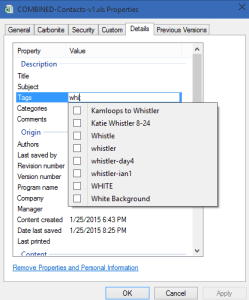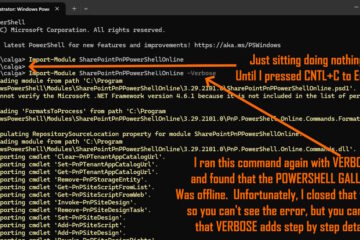If you want to edit the list of suggested TAGS in the Windows file system, you are going to be disappointed. The list of tags is made up of names you have typed in manually plus a hard coded list from Microsoft.
Below is a response I received from “Jason” at Microsoft Partner Support that explains the situation in more detail
Based on my experience, there is not an easy way to help you reduce tag list in Windows file system. Microsoft supplies several standard filters with Windows Search. Clients call these filter handlers (which are implementations of the IFilter interface) to extract text and properties from a document.
In Windows 7 and later, filters written in managed code are explicitly blocked. Filters must be written in native code due to potential CLR versioning issues with the process that multiple add-ins run in.
For your interesting, you can refer to this developer blog:
For your real concern, I suggest that you do not edit or change this feature since it might bring some potential risks. Sorry for the inconvenience. Thanks for your kindly understanding



5 Comments
Charlie · December 24, 2018 at 6:37 am
You used to be able to go to view in windows 8 and click on tags and see your entire tag list. Why did Microsoft do away with that?
Ian Matthews · December 31, 2018 at 2:46 pm
I am not sure as I have given up on tags under Windows 10 🙁
Rick · December 20, 2018 at 9:41 am
“The list of tags is made up of names you have typed in manually plus a hard coded list from Microsoft.” This is just not true. I’ve typed in manually the same three tags in thousands of files for the past four years and never once have they appeared in the suggestion drop down.
Ian Matthews · December 31, 2018 at 2:45 pm
Well, as you can see in the screen shot, the definitely appear for my customers. Perhaps you are using a different version of Windows.
Matthew Dunn · January 11, 2017 at 1:59 am
Oh, Microsoft . . . always thinking about that “end-user experience.” Keep up the good work!